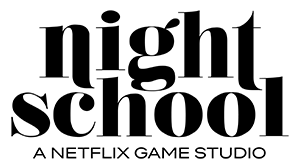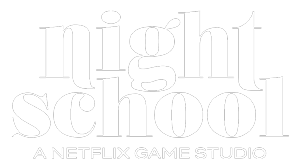Today, during their GDC keynote, Epic Games confirmed that Afterparty will be coming to PC and Mac via the Epic Games Store. Afterparty will also launch on Xbox One, PlayStation 4, and Nintendo Switch in 2019.
We want to bring you the most kickass version of Afterparty possible, and partnering with Epic has given us access to some amazing resources as we finish up development. This is an invaluable opportunity for an indie studio like ours, and we’re incredibly grateful for their ongoing support.
We want to share the Afterparty experience with the world, so we’ll continue to look at bringing the game to as many PC/Mac storefronts as possible in the future.
Thank you for being part of the Night School community. Seriously, you all rock. We’re looking forward to launch and we’re excited to continue the party with you.
Now that we’re well underway with Afterparty, we’re reviving our long-dead developer’s blog! Below, studio co-founder Sean Krankel and art director Ruel Pascual chat about Afterparty’s art style, our production failures and triumphs, and how we’ve evolved since Oxenfree.
Q: How has Night School’s production process evolved since Oxenfree?
Sean: In the broadest strokes, the process of making Afterparty is like creating multiple, larger versions of Oxenfree–there’s more complexity in the design, art, and script, which led to a bigger team.
Almost all the background art in Oxenfree was made by one person, so the game felt very personal. For Afterparty, we were still aiming for a handcrafted aesthetic, but with higher fidelity and more liveliness than Oxenfree. More characters on screen, more dynamic events; we wanted to take a big leap forward for this game, as well as the studio. That meant we needed to change our approach to art and to how the team was structured.
Q: Looking back, Afterparty’s art style has changed a lot since we began production, hasn’t it?
Sean: When we started production, we intended for every asset to be built in 3D. But as prototyping began, the in-game art was lacking the funkiness and mood of Claire and Beverly’s concept art. Our goal from the beginning was to translate the concept art into gameplay, but we underestimated how hard that would be with this new look. The team pulled it off with Oxenfree, but that game had such a minimalist art sensibility.
So in the early days of Afterparty, not only could we not match the look we were aiming for, but everything was taking considerably longer to build. We were only halfway happy with the in-game results and it was taking twice as long to make. Something had to change.
Ruel: Sometimes failure will push you to figure out creative ways to solve problems. We realized that in order to achieve the look we wanted, the characters had to be 3D but we needed to remain true to our original 2D concept art.
Q: What was the solution for that? An entirely new art process for the game?
Sean: Ruel and the rest of the team really took a long hard look at why we weren’t able to achieve the vision. You can have the best intentions when you’re looking at concepts, but it doesn’t matter if it’s not showing up in the actual game. We had to find a new process.
Ruel and our lead engineer, Bryant, had a matter of weeks to develop a new pipeline, with the end goal of making the game look like “living concept art.” They landed on a mix of 2D and 3D assets with custom lighting and effects. It was better than we’d originally hoped!
Ruel: Now, the walking path and objects the characters interact with are 3D, while background objects like bars, buildings, signs, and mountains, are all paintings taken directly from our concept art.

